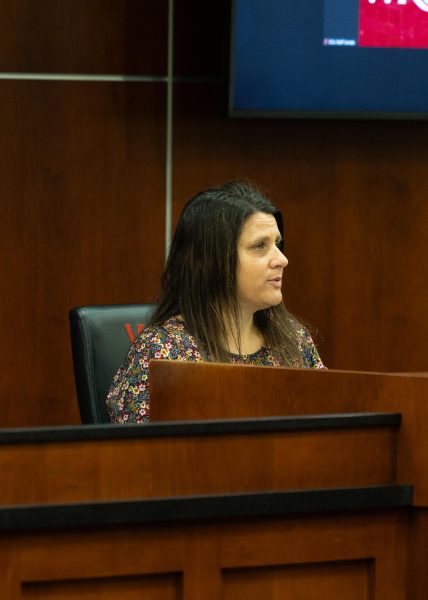Plus/minus grading on hold
August 31, 2004
 ast fall, at least 80 students gathered on the balcony outside of Garrett Ballroom during a University Senate meeting. They chanted and raised signs in protest of the adoption of a plus/minus grading system at Western.
ast fall, at least 80 students gathered on the balcony outside of Garrett Ballroom during a University Senate meeting. They chanted and raised signs in protest of the adoption of a plus/minus grading system at Western.
But several of those students went home disappointed when the plus/minus program was approved in March.
Still, opponents and those in favor of a new grading system might not see additional marks on their transcripts anytime soon.
Provost Barbara Burch has postponed the implementation of a plus/minus grading system again because she still has some concerns about the program.
The pilot program was supposed to begin this fall.
Burch originally asked for more information about the grading system through a memo presented at a University Senate meeting in April.
The academic quality committee presented a research plan to Burch in July.
Student and faculty surveys would be distributed and student focus groups would be assembled during the pilot program, according to the committee’s research plan. Grade information from previous semesters would also be used to evaluate the effects of plus/minus grading.
But that information wasn’t enough.
Burch said she has not approved the new grading system because she has questions about how it will be conducted. She also has questions about how data will be collected during the pilot program.
“I’m asking the committee to bring a recommendation for implementation back in a manner that is manageable and doable as does not affect the university community,” Burch said.
Although the additional marks won’t mean anything at Western during the pilot program, Burch said she is concerned that they will affect students if they attend other institutions in the future.
The pilot program was approved by the University Senate in March after months of debate over the adoption of a plus/minus system at Western.
Pluses and minuses would be added to final grades for two years during the pilot program. But the marks wouldn’t affect grade point averages or quality points.
Western officials would study the potential effects of pluses and minus on grade point averages during the program. They would also determine the number of students who would be on academic probation if pluses and minuses became a permanent part of the Western’s grading system.
Jim Berger, vice chair of the University Senate and chair of the academic quality committee, said the program will happen in the future, but there is no tentative date for it to begin.
“Actually, right now it’s kind of in limbo,” he said.
University Senate Chair Sherrie Serros said the University Senate can only make recommendations to the administration. Things can come to a standstill if those recommendations are not approved, she said.
Some officials aren’t sure when Burch will approve the program.
“The ball is pretty much in her court,” said Brian Strow, the academic quality committee member who made the initial proposal for plus/minus grading. “We’ll do it when she wants to do it. If she doesn’t want to do it, then we won’t.”
The concerns and delays haven’t hurt the validity of arguments for the plus/minus grading system, Strow said.
Katie Dawson, acting president of the Student Government Association, said the student government will continue to voice its opposition to plus/minus grading.
“We’re all for progress, but I think that the students don’t feel that the system is right for them,” she said.
Plans for the pilot program will be discussed by the academic quality committee, the executive committee and University Senate, Berger said.
The first University Senate meeting of the semester is Sept. 16 at 3:30 p.m. in Garrett Ballroom.
“I think that a lot of senators are going to be interested in the implementation of the plus/minus grading system,” Serros said.
Reach Ashlee Clark at [email protected].























